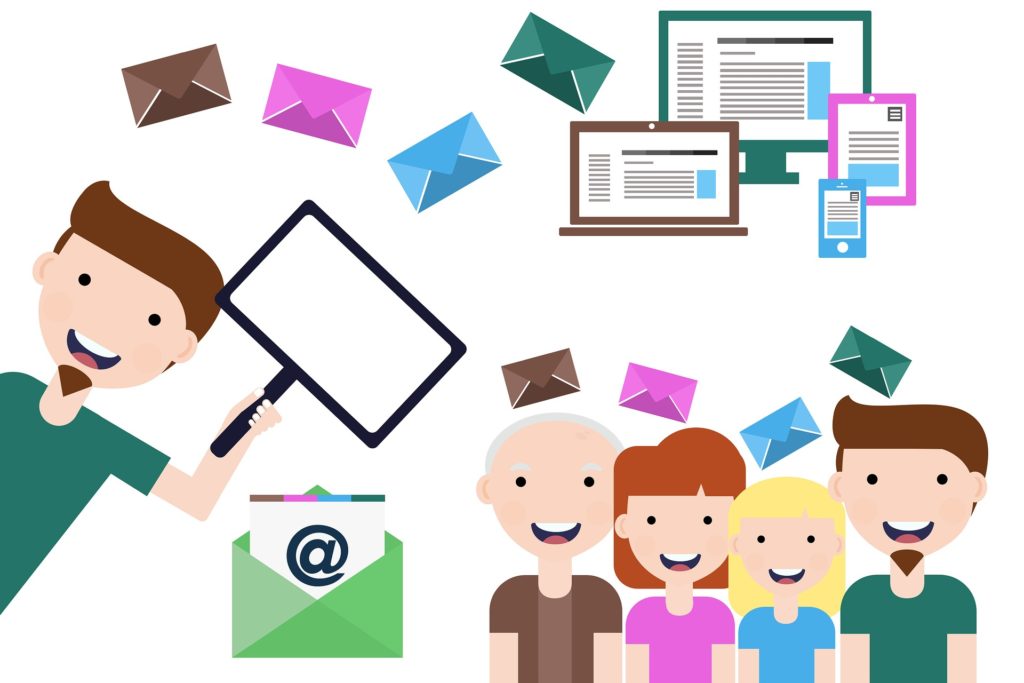Email Marketing Still Matters
As humanity dives deeper into the digital era with Artificial Intelligence (AI) and 3D printing, email—one of the digital era’s first creations— is still an important part of a digital marketing campaign. In fact, email marketing is the preferred communication medium for customers (Larson, 2014). According to EmailIsNotDead.com , countless of studies have come up with the same conclusion and an entire industry has been built up around email marketing tactics and strategies.
One particular company that benefitted from Email Marketing is Common Bond. Common Bond incubated in the Wharton School of Business by three MBA students that were frustrated with the available options for funding their education. The idea took off, and email marketing became a primary conduit for communicating with customers.
The email marketing strategy for Common Bond was extremely successful with high Open Rates and Click-to-Open Rates, and also low Unsubscribe rates. However, the company was about to begin offering a multitude of products targeting different segments. So, what changes would need to be made to their existing strategy? Or, would Common Bond just continue business-as-usual?

Benefits of Email Marketing
According to EmailIsNotDead.com (2017), “80% of content marketers use email marketing – CMI ‘B2B Content Marketing Research‘ (2014)…55% of companies generate more than 10 percent of sales from email – Econsultancy ‘Emailmarketing census’ (2014)…marketers consistently ranked email as the single-most-effective tactic for awareness, acquisition, conversion, and retention. – Gigaom Research ‘Workhorses and dark horses: digital tactics for customer acquisition‘ (2014)…Email is almost 40x better at acquiring new customers than Facebook and Twitter – McKinsey & Company (2014)”. It is apparent that email marketing is significant to many successful organizations and supported by many research companies.

Email Marketing Process
According to Larson (2014), the first step in an email marketing strategy is to capture the email addresses and create a database, and there are many strategies to help achieve building a list. Retailers, for example, have the easiest job of collecting emails because leaving one is a usually a requirement of every transaction. Others may use “gating content” by requiring users to provide an email to receive a white paper or case study. Furthermore, companies can offer webinars for people that register their email addresses, run a contest or giveaway, or even collect emails at trade shows. Free or low-cost software is available, such as Constant Contact and Mail Chimp, and are recommended for businesses that are just starting to build their email list (Larson, 2014).
After emails have been collected, a company can now begin to design the content of the emails. According to Dempsey (2017), personalization in media –including email marketing—benefitted businesses that did not utilize personalization with a 72% increase in Open Rates for emails. Personal touches are found throughout case studies and research about successful email marketing, but customization (personalization) extends to the entire marketing mix in general (MarketingSherpa.com, 2017).
The final stage in the process is measuring success (Larson, 2014). As mentioned, tools like Mail Chimp help in this area and track user interaction. The most important metrics to look at are Open-Rate, Click-through-rate (Click-to-open-rate), and the Unsubscribe rate (List Churn). As previously mentioned, Common Bond was successful across all metrics, but how would they do when they introduce new products?
Common Bond Email Marketing Strategy
According to Common Bond, The success of the email marketing campaigns was attributed mostly to the content calendar planned three months in advance. This way, all of the various departments, such as design, and copy can contribute and add their comments/opinions without being pressed for time. However, there is a risk for unseen circumstances to occur when planning that far ahead. So, just as long as the team can react quickly, this risk is easily mitigated.
In 2016, Common Bond was to begin offering new products, so the email strategy needed to be changed. The new strategy should be to create different content for different segments. As mentioned before, personalization is very successful in marketing and is utilized by the most successful companies. Furthermore, because Common Bond would be offering differing products, it needed to send out separate emails with different content to specific segments. They should continue to measure their success with open-rate and click-through rates.
To further improve the strategy of Common Bond, it is suggested to use an automatic optimization platform that reuses content from a content library. It creates and sends the emails based on user interaction through machine learning (a.k.a AI). The company is called Coherent Path .
As Common Bond grows as a company, email marketing should be part of a broader Integrated Marketing Communications (IMC) plan which involves content marketing through Videos/blogs/articles/podcasts and Press Releases, SEO (Search Engine Optimization), and social media marketing.

Email Marketing is here to stay
Email marketing is surely going to continue to grow. As more users join the Internet, more email accounts will be added, which means more customers to communicate to. Email is a very personal account, especially now that they are accessible through multiple means and devices.
Companies such as Common Bond exhibit success through a successful email marketing campaign. They built their list successfully, communicated to their audience effectively, then improved on their metric annually. In the future, a little tweak to their strategy is recommended, which includes separate content for different products and segments with an option to automate the optimization process with Coherent Path.
It is apparent that email will continue to be an important part of the digital world. And while email remains the most rudimentary part of the Internet, it will also remain to be the most useful part of a digital marketing campaign.




